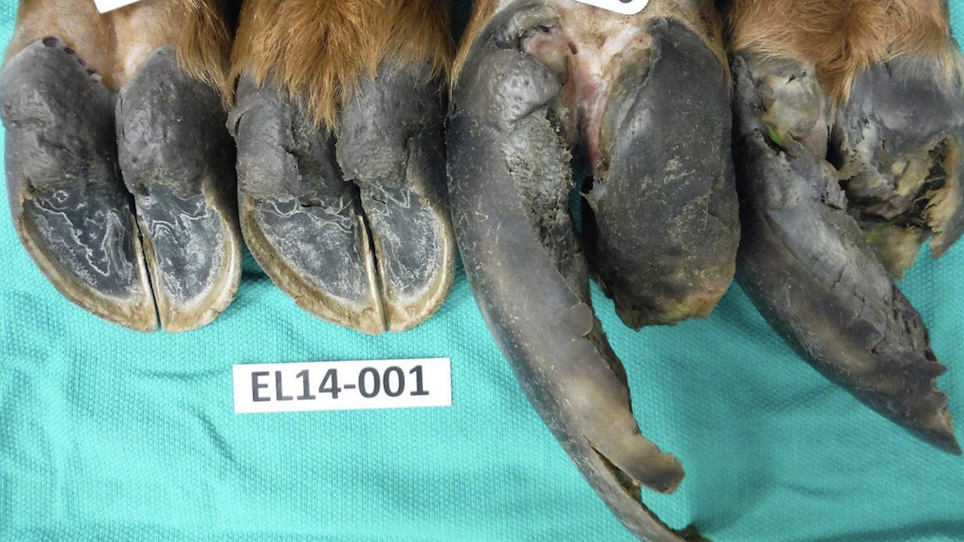
Washington wildlife officials are studying the hoof disease, shown here in one of four hooves on an elk infected with it, to find out more about how the bacteria that causes the disease is transmitted. (Photo: Washington Department of Fish and Wildlife)
Idaho Fish and Game has confirmed a case of Treponema Associated Hoof Disease (TAHD) in an elk killed by a hunter near Whitebird in 2018, the first animal diagnosed with TAHD in Idaho.
Washington Department of Fish and Wildlife has established a research project at Washington State University to learn more about the TAHD and its effect on elk populations. Samples from Idaho were sent to WSU for definitive diagnosis and testing of TAHD.
TAHD is caused by a spirochete bacterium that causes hoof abnormalities and lameness in elk. This is the same hoof disease that has been observed in elk in Washington and Oregon. While TAHD is not a bacteria associated with domestic livestock, Fish and Game is coordinating with the Idaho State Department of Agriculture on the issue.
TAHD is a relatively new condition in elk that was first recognized in 2000 in Washington. Since then, the condition has been identified in several elk herds in Washington, and in 2014, it was found in northwest Oregon.
Information about how this bacterium is transferred between animals, what other animals may be susceptible to it, and the potential impacts on wildlife populations is not well understood, but research on the disease continues.
Problems from the bacteria for elk include lesions or ulcers that can cause hooves to become broken, misshapen or overgrown, according to Washington wildlife officials. The meat is not affected, officials say, and there is no known risk to humans who eat meat or organs from an elk infected with TAHD.
Idaho Fish and Game staff has occasionally observed, or received information from the public, about elk around the state that have abnormal hooves, or are lame. No definitive cause for the lameness or hoof abnormalities in these other cases are known, but they can be caused by injury, arthritis, viral infections, and other bacterial and fungal infections. Prior to the recent case, biologists had not suspected TAHD to be present in Idaho.
Fish and Game will be increasing surveillance for TAHD in Idaho, and the department will be distributing more information to the public to enlist its help reporting elk that appear to have trouble walking, or that have odd-looking hooves.
Source: Idaho Fish and Game





